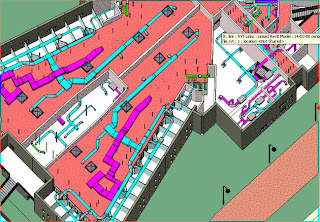Key industrial revolution happens when technology changes the way a particular process is performed.
In the world of architectural engineering design, building information modeling has enabled a sea of change ever since it has been introduced.
In the world of architectural engineering design, building information modeling has enabled a sea of change ever since it has been introduced.

Nowhere have the benefits been more pronounced than in mechanical, electrical and plumbing modeling. Today, most engineers and architects resort to MEP BIM services when it comes to seamless, collaborative and organized MEP design.
BIM has brought in a very collaborative atmosphere of modeling to MEP at a time when the need for such a tool was felt enormously.
But What Exactly do MEP BIM Services Perform? How are They Beneficial?
In order to answer this, we'll first have to understand that in architectural modeling, MEP involves a lot of complexity. To begin with, a high level of collaboration is required.
While individual modeling of mechanical, electrical and plumbing portions of the architectural design are easily done, it is hard to incorporate each by tying them together into a seamless unit. This collaboration often leads to clashes in the design, schedule and others.
While individual modeling of mechanical, electrical and plumbing portions of the architectural design are easily done, it is hard to incorporate each by tying them together into a seamless unit. This collaboration often leads to clashes in the design, schedule and others.
Building Information Modeling solves this problem by providing great foresight on clashes, collaboration and scheduled development.
MEP BIM Services Include:
• 2D and 3D drafting and modeling
• Coordinated drawings and designs
• Bill of materials
• Schedules and time-management
• Cost-effective processes (with cost-management)
• 3D to 4D and finally to 5D BIM services
Even though BIM is still in its nascent stage, several architectural designers and modelers have realized the potential it holds for fast, scheduled, exceptionally maintained modeling.
Since modeling decides how well the execution of the project goes on, BIM has become an industry-favorite.
• Coordinated drawings and designs
• Bill of materials
• Schedules and time-management
• Cost-effective processes (with cost-management)
• 3D to 4D and finally to 5D BIM services
Even though BIM is still in its nascent stage, several architectural designers and modelers have realized the potential it holds for fast, scheduled, exceptionally maintained modeling.
Since modeling decides how well the execution of the project goes on, BIM has become an industry-favorite.
Another part of BIM that has been termed as a popular feature that would raise its value is the ability to produce simulations right from within BIM software.
While from an architectural viewpoint this might just be an embellishment to the overall feature-set of MEP BIM services, where it really matters is in terms of presentation and visual cues.
While from an architectural viewpoint this might just be an embellishment to the overall feature-set of MEP BIM services, where it really matters is in terms of presentation and visual cues.
MEP BIM Modeling Services present an excellent methodology to produce fantastic results faster, better and in a more organized way.





0 comments: